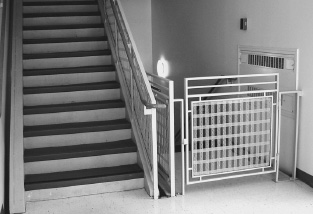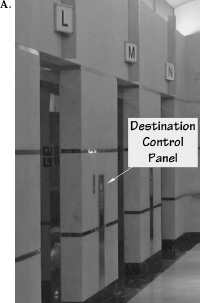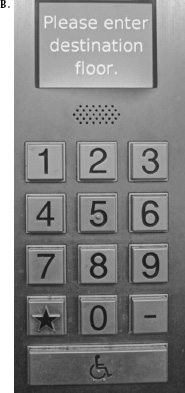Read The Design of Everyday Things Online
Authors: Don Norman
The Design of Everyday Things (27 page)

FIGURE 4.6
  Â
A Lock-In Forcing Function.
This lock-in makes it difficult to exit a program without either saving the work or consciously saying not to. Notice that it is politely configured so that the desired operation can be taken right from the message.
LOCK-INS
A lock-in keeps an operation active, preventing someone from prematurely stopping it. Standard lock-ins exist on many computer applications, where any attempt to exit the application without saving work is prevented by a message prompt asking whether that is what is really wanted (
Figure 4. 6
). These are so effective that I use them deliberately as my standard way of exiting. Rather than saving a file and then exiting the program, I simply exit, knowing that I will be given a simple way to save my work. What was once created as an error message has become an efficient shortcut.
Lock-ins can be quite literal, as in jail cells or playpens for babies, preventing a person from leaving the area.
Some companies try to lock in customers by making all their products work harmoniously with one another but be incompatible with the products of their competition. Thus music, videos, or electronic books purchased from one company may be played or read on music and video players and e-book readers made by that company, but will fail with similar devices from other manufacturers. The goal is to use design as a business strategy: the consistency within a given manufacturer means once people learn the system, they will stay with it and hesitate to change. The confusion when using a different company's system further prevents customers from
changing systems. In the end, the people who must use multiple systems lose. Actually, everyone loses, except for the one manufacturer whose products dominate.

FIGURE 4.7.
  Â
A Lockout Forcing Function for Fire Exit.
The gate, placed at the ground floor of stairways, prevents people who might be rushing down the stairs to escape a fire from continuing into the basement areas, where they might get trapped.
LOCKOUTS
Whereas a lock-in keeps someone in a space or prevents an action until the desired operations have been done, a lockout prevents someone from entering a space that is dangerous, or prevents an event from occurring. A good example of a lockout is found in stairways of public buildings, at least in the United States (
Figure 4.7
). In cases of fire, people have a tendency to flee in panic, down the stairs, down, down, down, past the ground floor and into the basement, where they might be trapped. The solution (required by the fire laws) is not to allow simple passage from the ground floor to the basement.
Lockouts are usually used for safety reasons. Thus, small children are protected by baby locks on cabinet doors, covers for electric outlets, and specialized caps on containers for drugs and toxic substances. The pin that prevents a fire extinguisher from being activated until it is removed is a lockout forcing function to prevent accidental discharge.
Forcing functions can be a nuisance in normal usage. The result is that many people will deliberately disable the forcing function, thereby negating its safety feature. The clever designer has to minimize the nuisance value while retaining the safety feature of the forcing function that guards against the occasional tragedy. The gate in
Figure 4.7
is a clever compromise: sufficient restraint to make people realize they are leaving the ground floor, but not enough of an impediment to normal behavior that people will prop open the gate.
Other useful devices make use of a forcing function. In some public restrooms, a pull-down shelf is placed inconveniently on the wall just behind the cubicle door, held in a vertical position by a spring. You lower the shelf to the horizontal position, and the weight of a package or handbag keeps it there. The shelf's position is a forcing function. When the shelf is lowered, it blocks the door fully. So to get out of the cubicle, you have to remove whatever is on the shelf and raise it out of the way. Clever design.
Conventions, Constraints, and Affordances
In
Chapter 1
we learned of the distinctions between affordances, perceived affordances, and signifiers. Affordances refer to the potential actions that are possible, but these are easily discoverable only if they are perceivable: perceived affordances. It is the signifier component of the perceived affordance that allows people to determine the possible actions. But how does one go from the perception of an affordance to understanding the potential action? In many cases, through conventions.
A doorknob has the perceived affordance of graspability. But knowing that it is the doorknob that is used to open and close doors is learned: it is a cultural aspect of the design that knobs, handles, and bars, when placed on doors, are intended to enable the opening and shutting of those doors. The same devices on fixed walls would have a different interpretation: they might offer support, for example, but certainly not the possibility of opening the wall. The interpretation of a perceived affordance is a cultural convention.
CONVENTIONS ARE CULTURAL CONSTRAINTS
Conventions are a special kind of cultural constraint. For example, the means by which people eat is subject to strong cultural constraints and conventions. Different cultures use different eating utensils. Some eat primarily with the fingers and bread. Some use elaborate serving devices. The same is true of almost every aspect of behavior imaginable, from the clothes that are worn; to the way one addresses elders, equals, and inferiors; and even to the order in which people enter or exit a room. What is considered correct and proper in one culture may be considered impolite in another.
Although conventions provide valuable guidance for novel situations, their existence can make it difficult to enact change: consider the story of destination-control elevators.
WHEN CONVENTIONS CHANGE: THE CASE OF DESTINATION-CONTROL ELEVATORS
         Â
Operating the common elevator seems like a no-brainer. Press the button, get in the box, go up or down, get out. But we've been encountering and documenting an array of curious design variations on this simple interaction, raising the question: Why?
(From Portigal & Norvaisas, 2011.)
This quotation comes from two design professionals who were so offended by a change in the controls for an elevator system that they wrote an entire article of complaint.
What could possibly cause such an offense? Was it really bad design or, as the authors suggest, a completely unnecessary change to an otherwise satisfactory system? Here is what happened: the authors had encountered a new convention for elevators called “Elevator Destination Control.” Many people (including me) consider it superior to the one we are all used to. Its major disadvantage is that it is different. It violates customary convention. Violations of convention can be very disturbing. Here is the history.
When “modern” elevators were first installed in buildings in the late 1800s, they always had a human operator who controlled the speed and direction of the elevator, stopped at the appropriate
floors, and opened and shut the doors. People would enter the elevator, greet the operator, and state which floor they wished to travel to. When the elevators became automated, a similar convention was followed. People entered the elevator and told the elevator what floor they were traveling to by pushing the appropriately marked button inside the elevator.
This is a pretty inefficient way of doing things. Most of you have probably experienced a crowded elevator where every person seems to want to go to a different floor, which means a slow trip for the people going to the higher floors. A destination-control elevator system groups passengers, so that those going to the same floor are asked to use the same elevator and the passenger load is distributed to maximize efficiency. Although this kind of grouping is only sensible for buildings that have a large number of elevators, that would cover any large hotel, office, or apartment building.
In the traditional elevator, passengers stand in the elevator hallway and indicate whether they wish to travel up or down. When an elevator arrives going in the appropriate direction, they get in and use the keypad inside the elevator to indicate their destination floor. As a result, five people might get into the same elevator each wanting a different floor. With destination control, the destination keypads are located in the hallway outside the elevators and there are no keypads inside the elevators (
Figure 4.8A
and
D
). People are directed to whichever elevator will most efficiently reach their floor. Thus, if there were five people desiring elevators, they might be assigned to five different elevators. The result is faster trips for everyone, with a minimum of stops. Even if people are assigned to elevators that are not the next to arrive, they will get to their destinations faster than if they took earlier elevators.
Destination control was invented in 1985, but the first commercial installation didn't appear until 1990 (in Schindler elevators). Now, decades later, it is starting to appear more frequently as developers of tall buildings discover that destination control yields better service to passengers, or equal service with fewer elevators.
Horrors! As
Figure 4.8D
confirms, there are no controls inside the elevator to specify a floor. What if passengers change their minds and wish to get off at a different floor? (Even my editor at Basic Books complained about this in a marginal note.) What then? What do you do in a regular elevator when you decide you really want to get off at the sixth floor just as the elevator passes the seventh floor? It's simple: just get off at the next stop and go to the destination control box in the elevator hall, and specify the intended floor.


